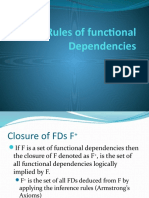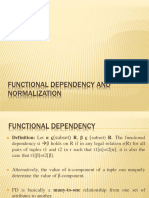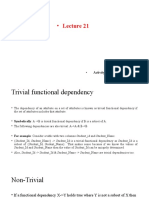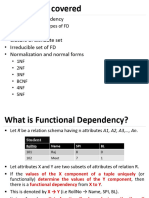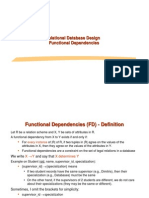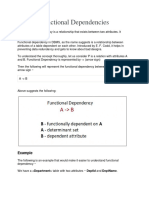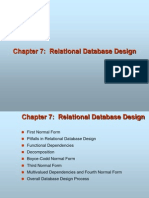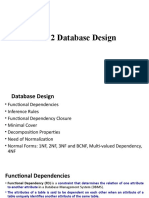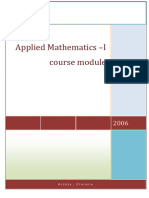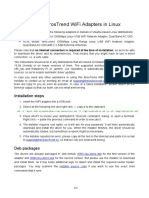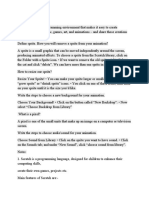0% found this document useful (0 votes)
13 views50 pagesCourse FD
The document discusses Functional Dependencies (FDs) in relational databases, defining them as expressions that establish relationships between attributes. It outlines the roles of FDs in ensuring proper database schema construction and introduces Armstrong's Axioms, which describe fundamental properties of FDs. Additionally, it covers concepts such as trivial and elementary FDs, closure of FDs, and the notion of coverage and minimum coverage in the context of functional dependencies.
Uploaded by
ibnbiskraCopyright
© © All Rights Reserved
We take content rights seriously. If you suspect this is your content, claim it here.
Available Formats
Download as PDF, TXT or read online on Scribd
0% found this document useful (0 votes)
13 views50 pagesCourse FD
The document discusses Functional Dependencies (FDs) in relational databases, defining them as expressions that establish relationships between attributes. It outlines the roles of FDs in ensuring proper database schema construction and introduces Armstrong's Axioms, which describe fundamental properties of FDs. Additionally, it covers concepts such as trivial and elementary FDs, closure of FDs, and the notion of coverage and minimum coverage in the context of functional dependencies.
Uploaded by
ibnbiskraCopyright
© © All Rights Reserved
We take content rights seriously. If you suspect this is your content, claim it here.
Available Formats
Download as PDF, TXT or read online on Scribd
/ 50




